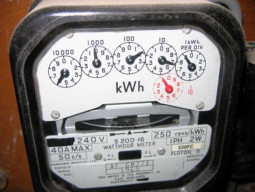
Pakistan’s economic situation is getting precarious. It is adversely impacted due to inflation and a depreciating rupee. While the cost of living has risen manifold in the last few months, masses are reeling under an unprecedented increase in oil and energy prices. Now, even the IMF has expressed its concern over the situation and warned that price spiral and uneven distribution of resources could lead to public backlash. The global donor, which struck a bailout deal with Pakistan this week to disburse $1.27 billion, believes that the prevailing political instability is proving to be counter-productive, and categorically hinted at the slim majority in the parliament of the ruling dispensation in an executive summary of its seventh and eighth reviews under the Extended Fund Facility (EFF).
This is a moment of deep introspection. The ailing economy is posing a threat to the country’s social harmony, and it is being felt across the board. When prices of essential commodities go out of common man’s reach, and the government too is unable to cushion it with succour, the ultimate outcome is revulsion on the streets. Many of the East European economies and ASEAN states had witnessed it during the financial crisis, and of late Sri Lanka was the theatre of unrest. Pakistan is on the verge of it, and all that is needed is to stem food prices, and make mobility within the reach of the masses. The gigantic task calls for instant relief measures, and that entails macro-fixing of the entire budget estimates.
The statistics on the horizon are draconic. Inflation has hit a 47-year high in August at over 27.3 per cent, and the conflict in Ukraine has sent food prices skyrocketing. It is said that the devastating impact is yet to come, pushing exchange rates further high and demoralising the rupee against the dollar. The consecutive rise in petrol prices, experts say, has surpassed even IMF estimates and is being seen as a source of revenue for the government at the altar of masses. This pathetic equation is further compounded by floods and ensuing destruction, pushing Pakistan in need of billions of dollars for rehabilitation.
As per Pakistan Bureau of Statistics, the prices for pulses have risen by 114 per cent compared to a year ago, whereas vegetables and cooking oil have soared by an average of 80 per cent. Likewise, transportation cost has gone up by over 60 per cent as petroleum products saw an 84 per cent upward trend. Last but not least is the cost of electricity which is up by a staggering 123 per cent on account of various tariff enhancements. The question is can this sustain, and if yes then for how long. The country is on the brink of a shortage of eatables, dairy and livestock due to the monsoon deluge, and feeding 220 million mouths is the biggest challenge. This cannot be done at the cost of today’s price index. It solicits a contingency plan to evade mass unrest.
Published in The Express Tribune, September 3rd, 2022.
Like Opinion & Editorial on Facebook, follow @ETOpEd on Twitter to receive all updates on all our daily pieces.



1726222798-0/Tribune-Pic-(13)1726222798-0-165x106.webp)















COMMENTS
Comments are moderated and generally will be posted if they are on-topic and not abusive.
For more information, please see our Comments FAQ